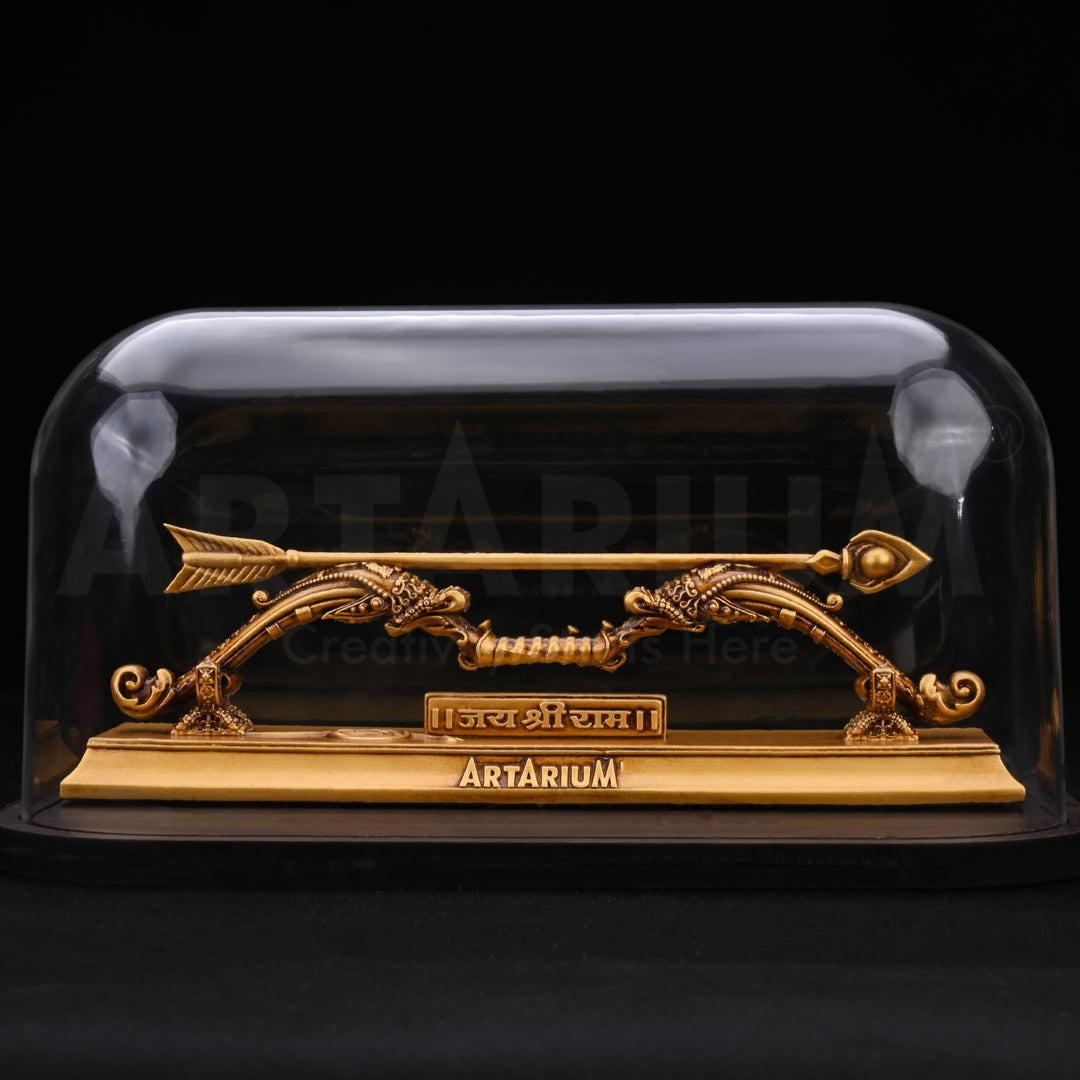Introduction: In the rich tapestry of Hindu mythology, the epic Ramayana stands as a timeless saga of righteousness, devotion, and valor. At its heart lies the revered figure of Lord Rama, the seventh avatar of Lord Vishnu, whose divine exploits continue to inspire millions around the world. Central to the narrative is the iconic bow of Lord Rama, known as the Ram Dhanush. This legendary weapon holds profound significance, serving as a symbol of strength, virtue, and divine destiny. Let us delve into the mystical lore surrounding the Ram Dhanush and unravel its significance in the epic of Ramayana.
The Mythos of Ram Dhanush: The Ramayana recounts the tale of Lord Rama's exile, his quest to rescue his abducted wife Sita, and the eventual triumph of good over evil. Integral to this narrative is the swayamvara (marriage ceremony) of Sita, where suitors from far and wide compete to string the divine bow of Lord Shiva, known as the Pinaka. This formidable bow, entrusted to King Janaka of Mithila, becomes the focal point of the epic, symbolizing not only Sita's hand in marriage but also the test of valor and virtue for aspiring suitors.
The Significance of Ram Dhanush:
-
Symbol of Divine Authority: The Ram Dhanush represents the divine authority vested in Lord Rama, signifying his status as an incarnation of Lord Vishnu. As the wielder of this sacred bow, Rama demonstrates his divine mandate to uphold righteousness and vanquish evil, thereby fulfilling his destined role as the savior of humanity.
-
Test of Valor and Virtue: The act of stringing the Ram Dhanush becomes a pivotal moment in the Ramayana, serving as a test of valor and virtue for the assembled princes. Only the worthy and righteous are deemed capable of wielding the bow, underscoring the importance of moral integrity and divine grace in the pursuit of noble endeavors.
-
Manifestation of Strength and Skill: The Ram Dhanush is described as an immensely powerful weapon, requiring exceptional strength and skill to wield. Its significance extends beyond mere physical prowess, embodying the inner strength, determination, and resolve required to confront adversity and overcome obstacles on the path of righteousness.
The Divine Confluence: Beyond its material form, the Ram Dhanush embodies a deeper symbolism that resonates with spiritual seekers and devotees alike. It represents the convergence of divine will, human endeavor, and cosmic destiny, wherein the actions of mortal beings are intricately woven into the grand tapestry of universal order. Through the narrative of Lord Rama and his divine bow, the Ramayana imparts timeless teachings on the nature of dharma (righteous duty), devotion, and the eternal struggle between good and evil.
Legacy and Reverence: The legacy of the Ram Dhanush endures through the ages, inspiring reverence and devotion among millions of devotees worldwide. Temples dedicated to Lord Rama often depict intricate carvings and sculptures of the divine bow, serving as a reminder of the indomitable spirit of righteousness that it represents. The annual celebration of Ram Navami, commemorating the birth of Lord Rama, further reinforces the significance of the Ram Dhanush in Hindu culture and tradition.
Conclusion: In the epic narrative of the Ramayana, the Ram Dhanush emerges as a potent symbol of divine authority, valor, and virtue. Its significance transcends the realms of myth and legend, offering profound insights into the timeless truths of dharma and the eternal struggle between good and evil. As devotees continue to invoke the name of Lord Rama and pay homage to his sacred bow, the legacy of the Ram Dhanush remains etched in the annals of Hindu mythology, serving as a beacon of hope and inspiration for generations to come.

